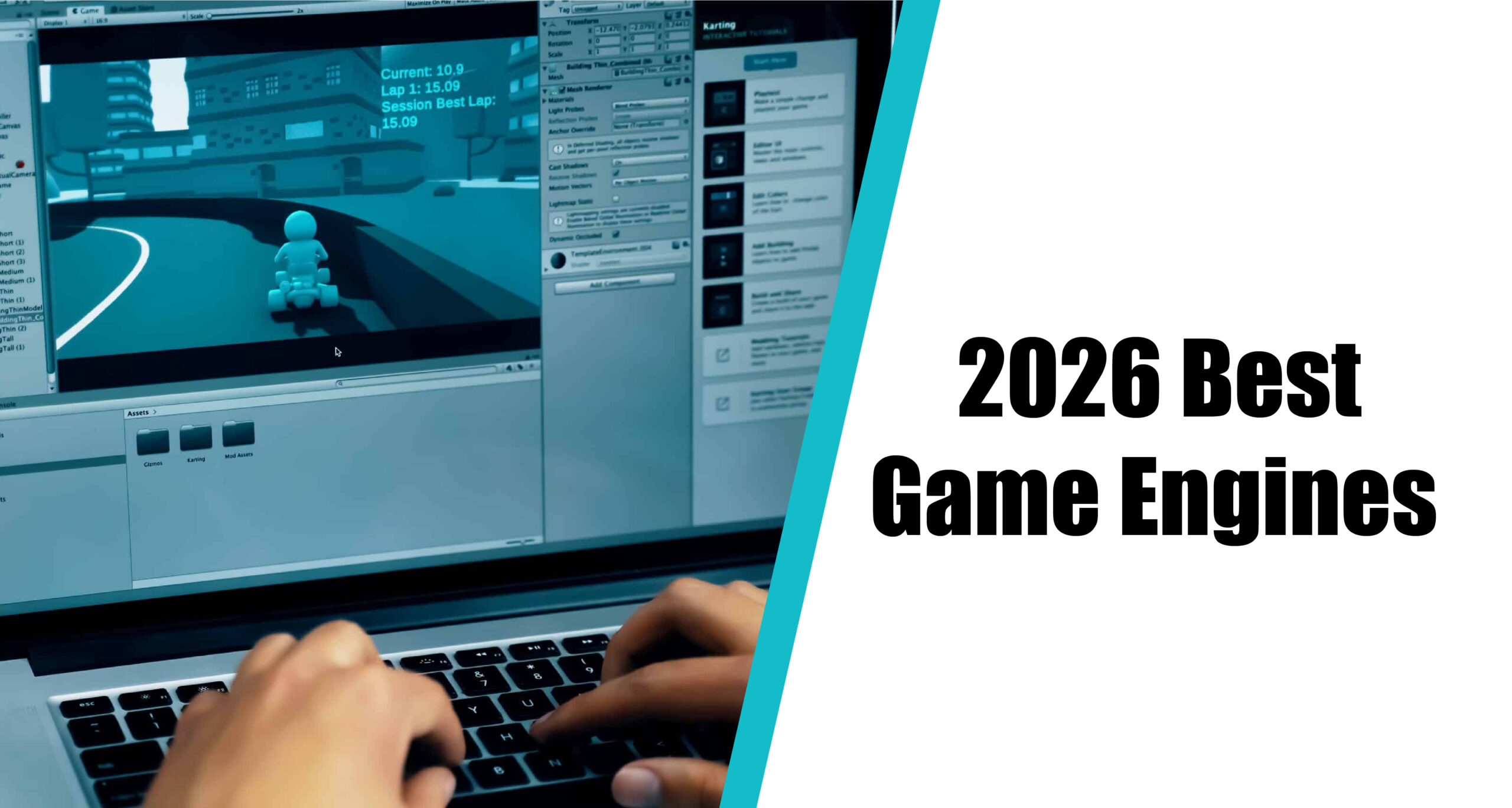Every great game begins with the right foundation — the engine that powers its visuals, logic, and interactivity. In 2026, developers have access to more powerful, flexible, and intelligent tools than ever before. From industry-standard platforms like Unreal and Unity to rising stars in open-source innovation, this guide to the 2026 Best Game Engines highlights the top options that are shaping the future of game development. For deeper insights into gaming technology and development trends, explore https://www.prosoundnewseurope.com.
Choosing the right game engine is one of the most critical decisions a developer can make. The best engines combine power, performance, and scalability — giving both indie teams and AAA studios the freedom to turn imagination into immersive reality.
What to Look for in a Game Engine
Before diving into specific engines, it’s essential to understand what defines a great one in 2026.
Key features to consider:
- Performance and Optimization: Efficient rendering and multi-threading for complex worlds.
- Cross-Platform Support: Easy deployment to PC, consoles, mobile, and VR/AR devices.
- Visual Quality: Real-time lighting, physics, and cinematic effects.
- Ease of Use: Intuitive interfaces and accessible scripting tools for creators of all skill levels.
- AI and Automation: Integrated machine learning for faster prototyping and smarter gameplay systems.
- Community and Documentation: Active support networks and tutorials for long-term growth.
Now, let’s explore the top engines setting the standard for 2026.
Top Game Engines for 2026
| Engine | Best For | Notable Features | Licensing | Platforms |
| Unreal Engine 5.3 | AAA & high-end indie games | Nanite geometry, Lumen lighting, MetaHuman Creator, full VR/AR integration | Free (royalty after revenue threshold) | PC, Console, Mobile, VR, AR |
| Unity 6 | Indie & mobile development | DOTS system, AI-assisted tools, WebGL export, cross-platform workflows | Subscription-based | PC, Console, Mobile, Web |
| Godot 4.2 | Open-source projects | Lightweight design, GDScript language, easy 2D/3D switching | Free & open source | PC, Mobile, Web |
| CryEngine V | Realistic visuals & FPS titles | Advanced physics, photorealistic rendering, sandbox editor | Royalty-based | PC, Console |
| Amazon Lumberyard 2 (O3DE) | Large-scale multiplayer worlds | Open 3D engine, AWS cloud integration, network scaling | Free (open-source) | PC, Console |
| Frostbite 5 | EA-exclusive productions | Realistic destruction physics, cinematic rendering | Proprietary | PC, Console |
| GameMaker Studio 3 | 2D and hybrid games | Drag-and-drop interface, GML scripting, quick export options | Subscription-based | PC, Mobile, Web |
Each of these engines brings something unique to the table — from Unreal’s cinematic power to Godot’s community-driven simplicity.
Unreal Engine 5.3: The Powerhouse of 2026
Epic Games’ Unreal Engine remains the industry titan. With real-time rendering powered by Nanite and global illumination via Lumen, developers can achieve movie-level visuals without sacrificing performance. The addition of MetaHuman Creator 2.0 allows lifelike characters to be built in minutes, while Verse, Unreal’s new scripting language, simplifies complex logic.
Its scalability makes it perfect for both blockbuster titles and ambitious indie projects. Major games like The Witcher 4 and Senua’s Saga: Hellblade II showcase Unreal’s breathtaking capabilities in 2026.
Unity 6: Flexibility for Every Platform
Unity’s 2026 update refines performance and accessibility, introducing AI-assisted asset placement, enhanced lighting systems, and a powerful DOTS (Data-Oriented Technology Stack) for optimized performance. Its new Unity Cloud Connect lets teams collaborate seamlessly across devices, making it ideal for remote studios and mobile developers.
People Read More: Kristy Althaus – The Story, Controversies, and Life After the Spotlight
From indie hits to VR experiments, Unity continues to empower creative developers who prioritize versatility and speed over heavy technical setups.
Godot 4.2: The Open-Source Revolution
Godot’s rise in popularity has been nothing short of remarkable. Completely free and open-source, it offers intuitive scripting with GDScript and strong support for both 2D and 3D development. Version 4.2 introduces improved physics, Vulkan rendering, and tighter integration with C# for advanced functionality.
Its thriving community, transparent development model, and zero-cost licensing make it a top choice for indie creators and small studios worldwide.
CryEngine V: Visual Realism at Its Finest
CryEngine remains the go-to for developers who demand lifelike environments and advanced physics. With tools for volumetric lighting, destructible terrain, and motion-captured animation, it’s perfect for FPS and simulation-style projects.
In 2026, CryEngine integrates AI-driven scene optimization and an updated sandbox editor for faster iteration. While it requires a bit more technical skill, the payoff is unmatched realism.
Amazon Lumberyard 2 (O3DE): Cloud-Ready Development
Now fully rebranded as Open 3D Engine (O3DE), Amazon’s platform is ideal for developers building expansive multiplayer or live-service games. Its deep AWS integration enables real-time analytics, cloud rendering, and massive player scalability.
The open-source framework gives developers control over every aspect of their project — making it a great choice for those who value flexibility and online infrastructure.
GameMaker Studio 3: Simplicity Meets Speed
For 2D games, GameMaker Studio 3 continues to dominate. Its drag-and-drop interface and scripting language (GML) make it ideal for new developers and small teams. In 2026, it supports cross-platform exports, integrated AI asset tools, and a streamlined editor that lets you publish mobile or web games in record time.
Games like Undertale 2 and Hyper Light Frontier highlight how accessible yet powerful GameMaker has become.
Emerging Game Engine Trends for 2026
The industry’s future is defined by automation, accessibility, and AI-driven design. Key trends shaping this year include:
- AI-Assisted Development: Engines now generate assets, animations, and even scripts automatically.
- Procedural World Building: AI creates vast, believable environments with minimal manual work.
- Cross-Reality Compatibility: Seamless transitions between AR, VR, and traditional gaming experiences.
- Open-Source Collaboration: Developers favor transparency and customization over closed ecosystems.
- Cloud Rendering: Real-time development collaboration without heavy local hardware.
These trends are democratizing game creation — giving both indie and AAA developers the tools to produce groundbreaking experiences.
How to Choose the Right Engine
The “best” engine depends on your project goals and experience level:
- For cinematic 3D worlds: Unreal Engine 5.3
- For mobile and indie flexibility: Unity 6
- For open-source freedom: Godot 4.2
- For photorealism and physics-heavy games: CryEngine V
- For massive multiplayer online games: O3DE
- For fast 2D or prototype development: GameMaker Studio 3
Evaluate your team size, project scope, and technical comfort before committing — switching engines mid-project can be costly.
Read Also: Who Is Noah Wilde West? Inside the Life of Chyler Leigh’s Son
Final Thoughts
The 2026 Best Game Engines represent the most exciting time in development history. With smarter tools, AI integration, and open collaboration, building a game has never been more accessible or powerful. Whether you’re crafting a small indie hit or developing the next big blockbuster, today’s engines empower you to bring your vision to life with speed and precision. The future of game creation isn’t limited by resources anymore — it’s defined by imagination.











